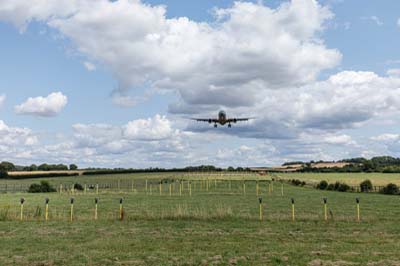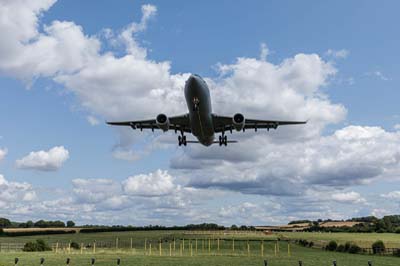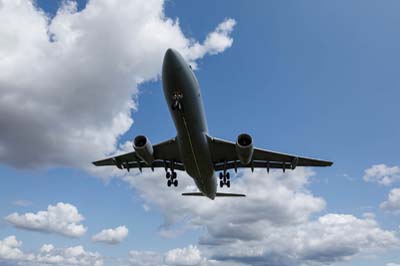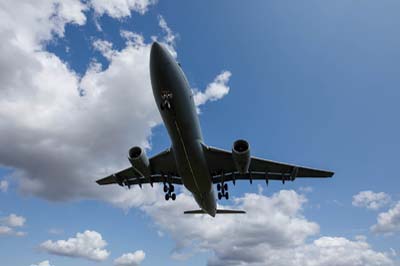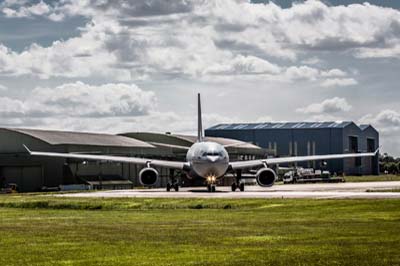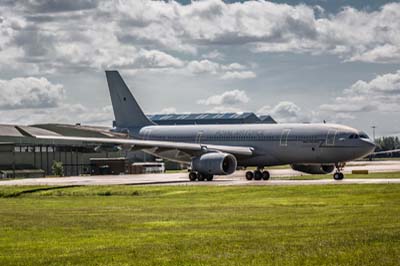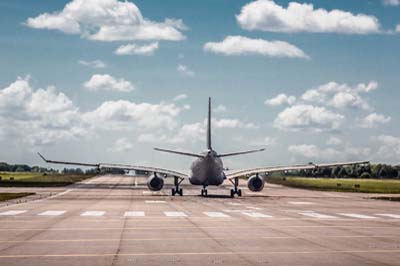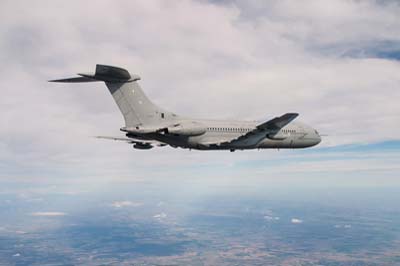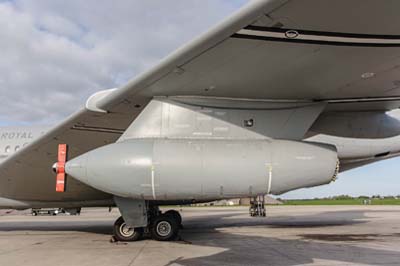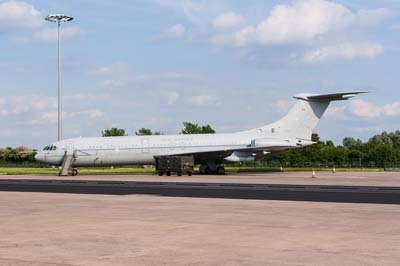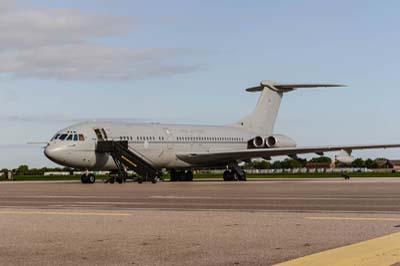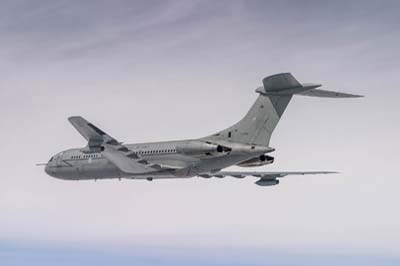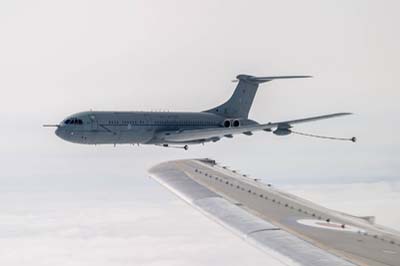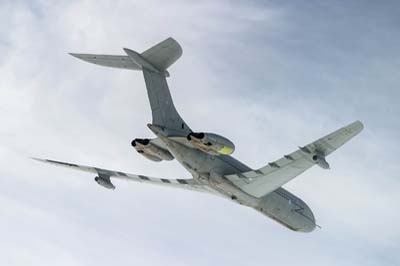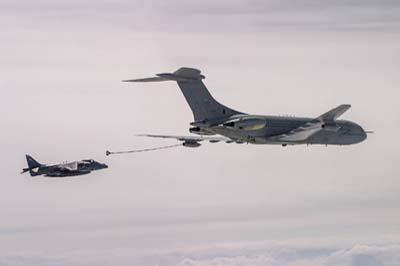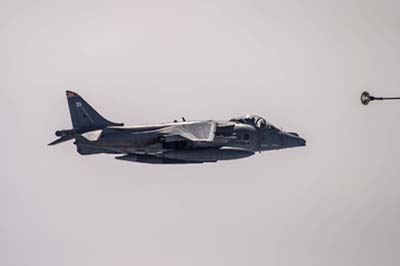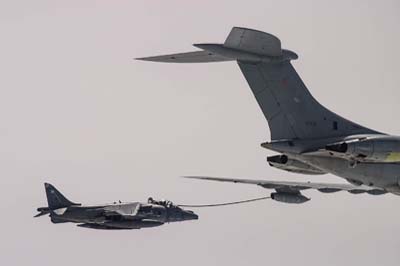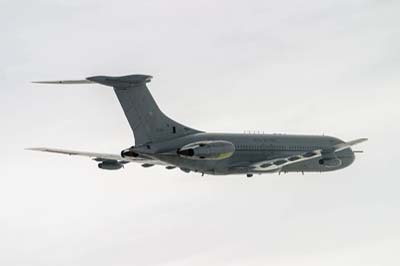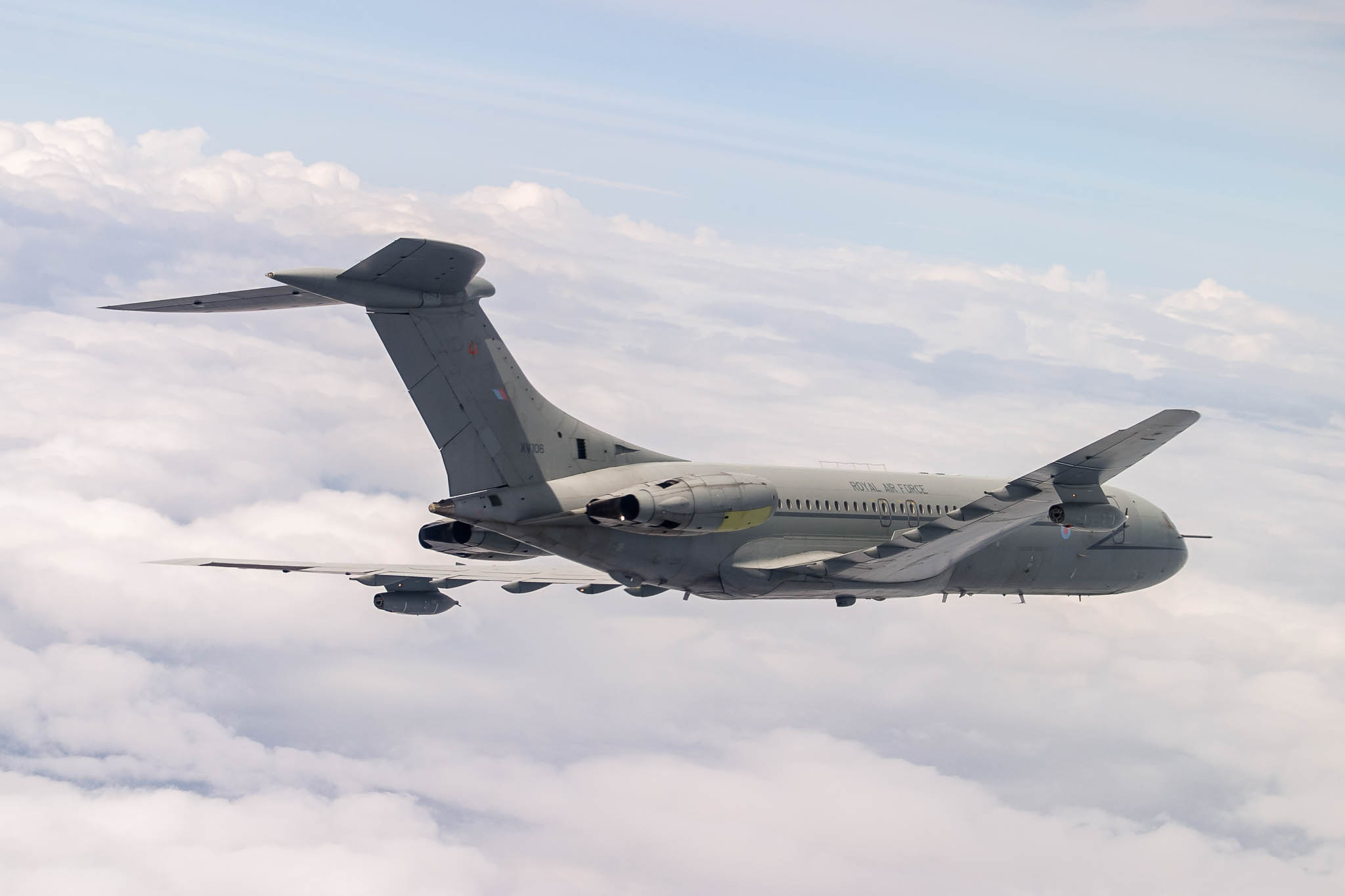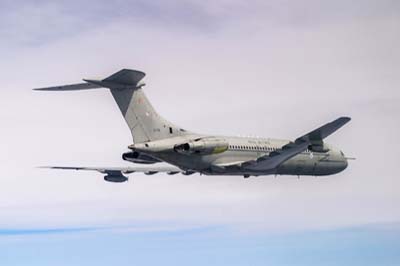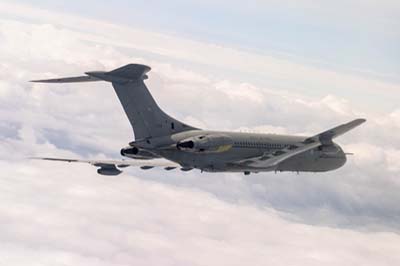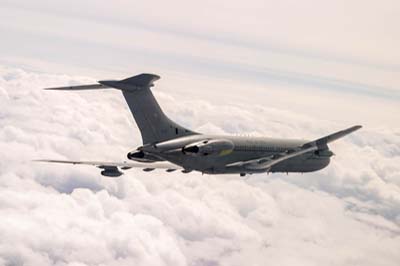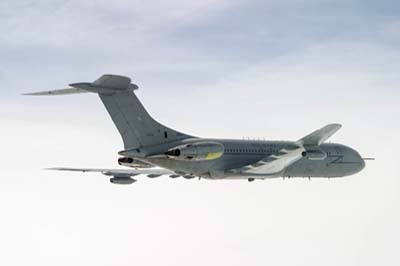In Action
10 Squadron - RAF Brize Norton
|
| Airbus A330-243MRTT KC.2 Voyager (ZZ336), this Multi Role Tanker Transport returning to Brize Norton in August 2019. Owned by Air Tanker Ltd the Voyager fleet is operated by 10 and 101 Squadron. |
| Airbus A330-243MRTT KC.2 Voyager (ZZ333), this Multi Role Tanker Transport is departing at Brize Norton in June 2015. |
| 10 Squadron disbanded in October 2005 it's ten VC-10 C.1Ks were transferred to 101 Squadron also operating from RAF Brize Norton. The VC-10s then operated alongside 216 Squadron with their TriStars at RAF Brize Norton. |
The C.1s were delivered to the RAF from July 1966 to August 1968 to fulfil the role of transporting military personnel and VIP's to locations around the world. They also can perform Aero-medical Evacuation duties as and when required, when they can carry up to 76 stretchers with six medical attendants. The C.1 can carry 150 passengers and has a crew of four with an unrefuelled range of over 3,600 miles.
From 1991 to 1996 Flight Refuelling converted the C.1s to C.1K standard to enable them to air to air refuel. Two Mk.32 wing mounted refuelling pods with an under fuselage CCTV camera, were the principal modifications carried out. Without any extra fuel tanks installed, the aircraft continued to have the same capabilities as before and really only air to air refuel when transporting passengers over long distances.
By 1982 BAe Filton had completed conversion of a number of ex civilian airline VC-10s to K.2 and K.3 standard. Five ex-British Airways Super VC-10s were later converted to K.4 standard as the Victor K.2s were gradually being phased out. 101 Squadron was reformed in 1984 to operate the 'new' VC-10 tankers. Up to the disbandment of 10 Squadron, 101 Squadron has a different role to 10 Squadron in that it is responsible for all the air to air refuelling of Britain's fighters, throughout the UK Air Defence Region and on exercises around the world. A 101 Squadron VC-10 is on permanent standby at Brize Norton and can take to the air in just 15 minutes. The VC-10 K.3/K.4 variants have three refuelling points, comprising of two wing hoses and a single fuselage-mounted refuelling point. |
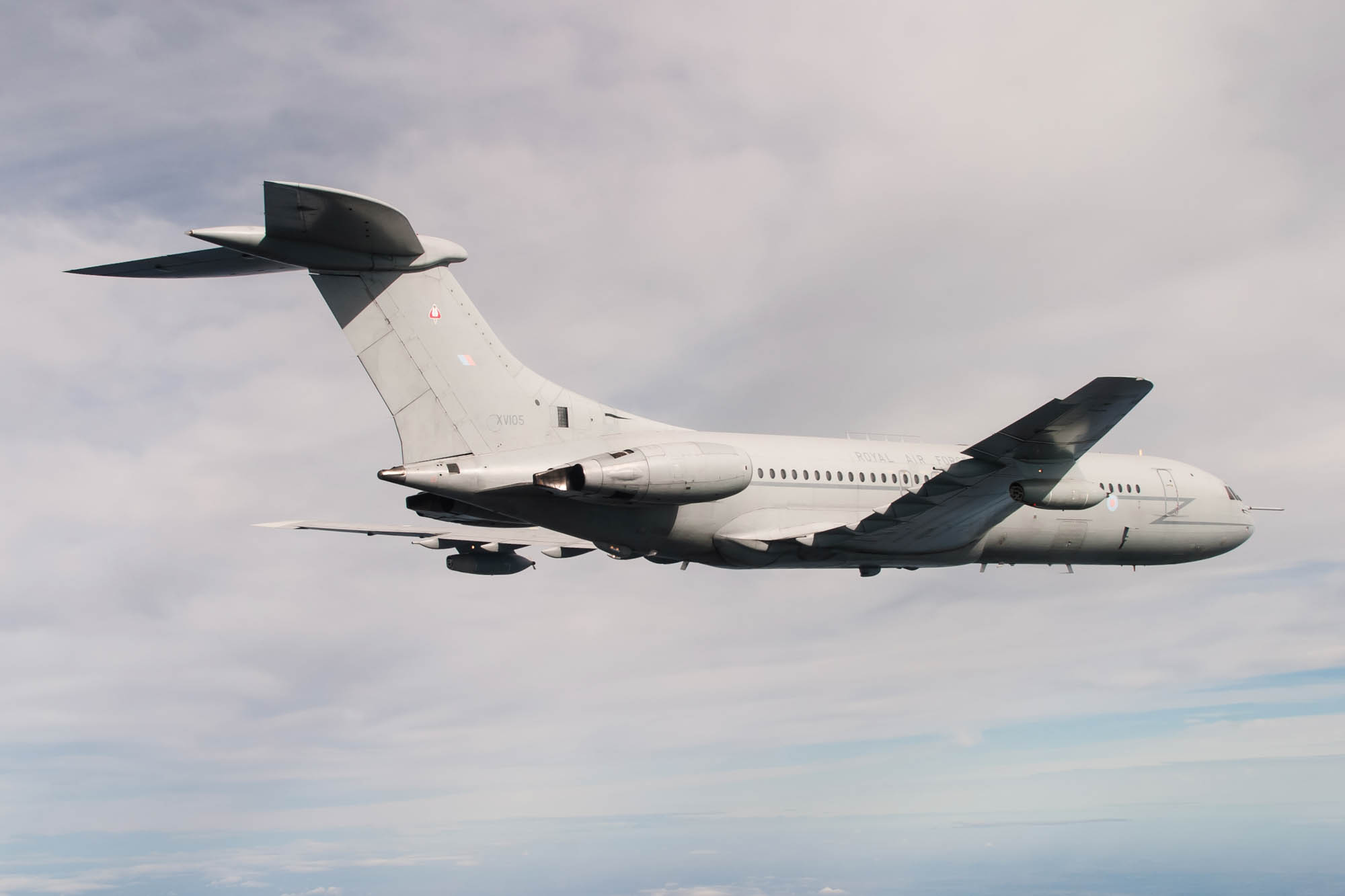 |
| VC-10 C.1K (XV105) involved with Air to Air Refuelling as part of TLP 2004-4 exercise, in September 2004. |
Left to right: VC-10 C.1K (XV105) in September 2004.
Port side refuelling point of VC-10 C.1K (XV109) in 2005.
VC-10 C.1K (XR808) and VC-10 C.1K (XV109) at Brize Norton July 2004. |
| Left to right: Three images from a 'Receiver Training' sortie flown in July 2004. VC-10 C.1K (XV106) callsign 'Tartan 52' received fuel from TriStar (ZD953) 'Fagin 51' in Air to Air Refuelling Areas (AARA) 5 & 6, during the four hour sortie in July 2004. |
| Left to right: Harrier GR.7 (ZD410 '39') receiving fuel from VC-10 C.1K (XV106) in July 2004. |
| VC-10 C.1K (XV106) in July 2004. |
| Left to right: VC-10 C.1K (XV106) in July 2004. |
